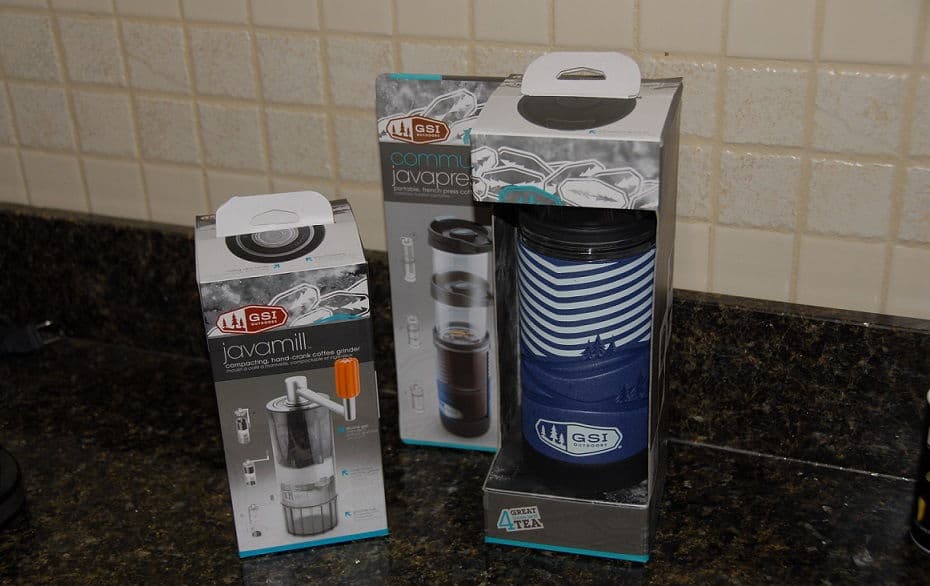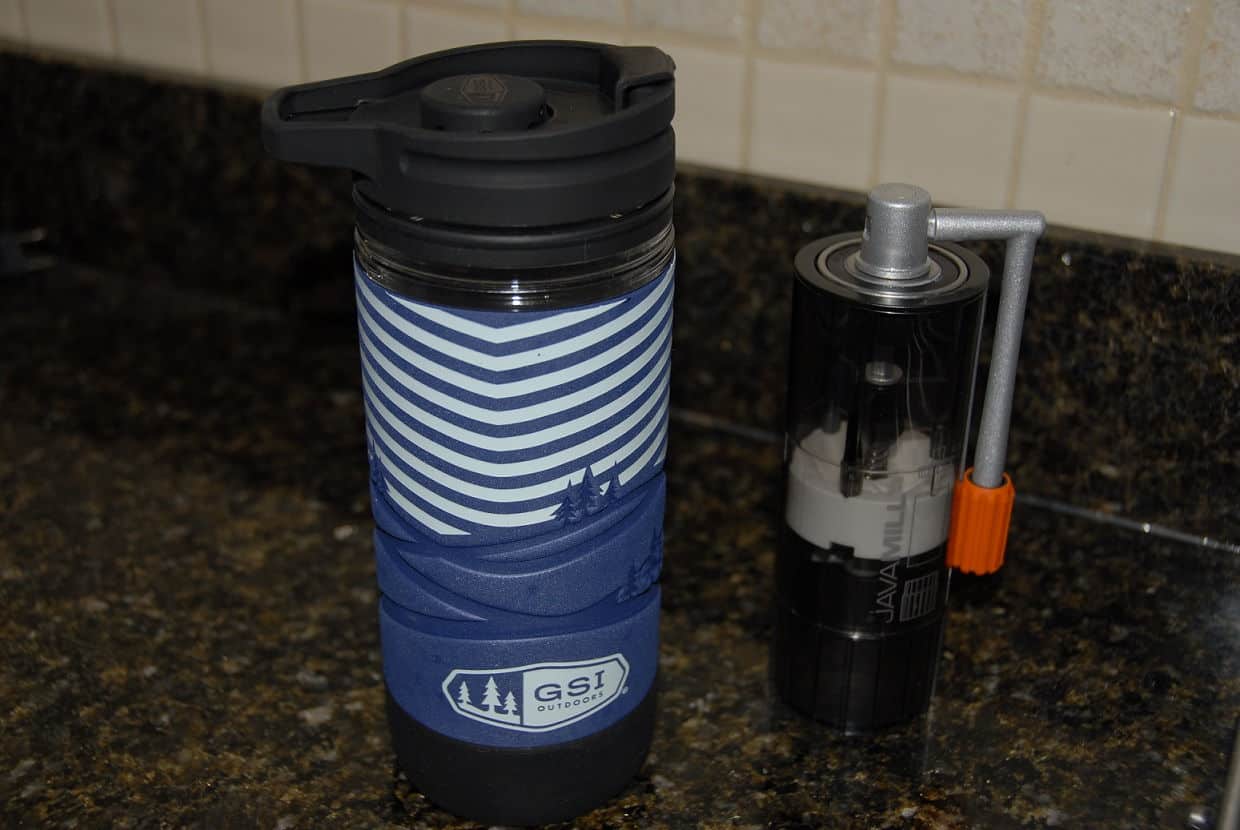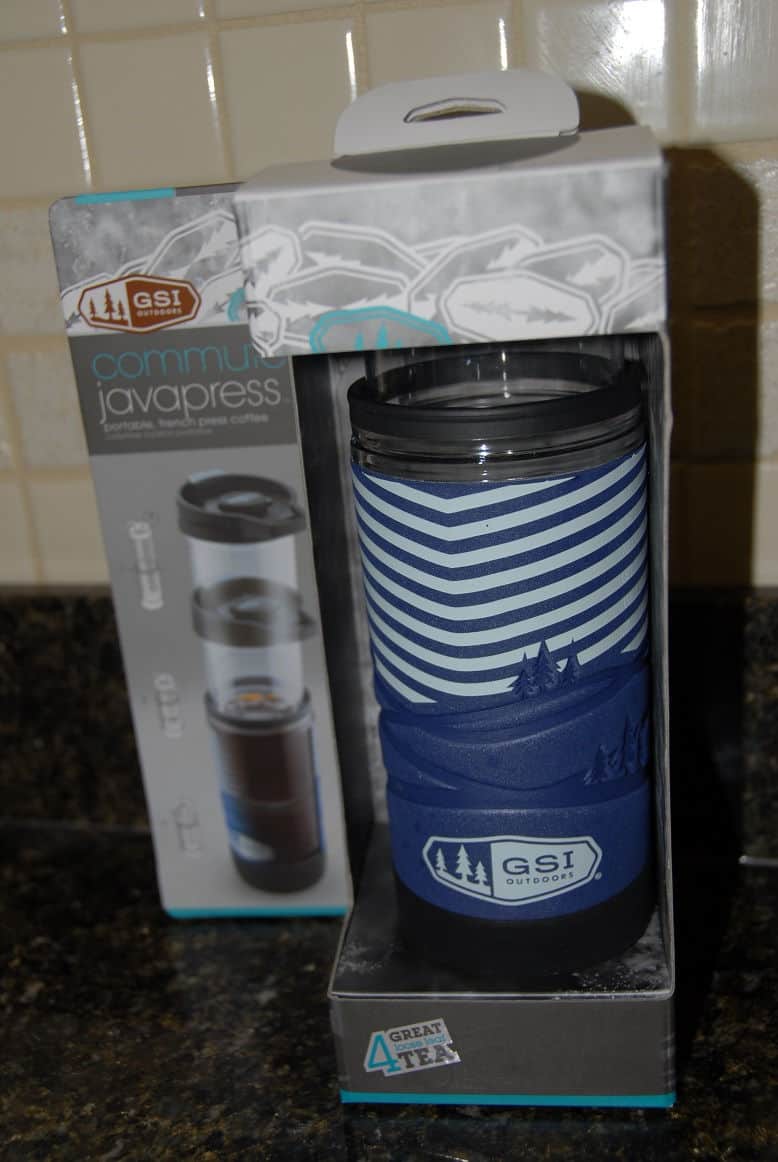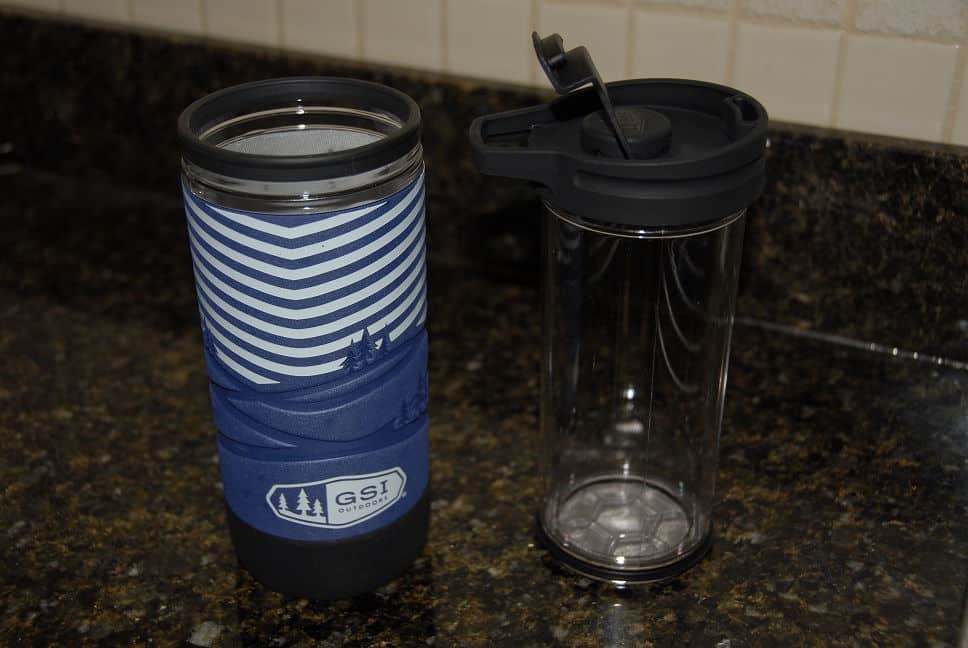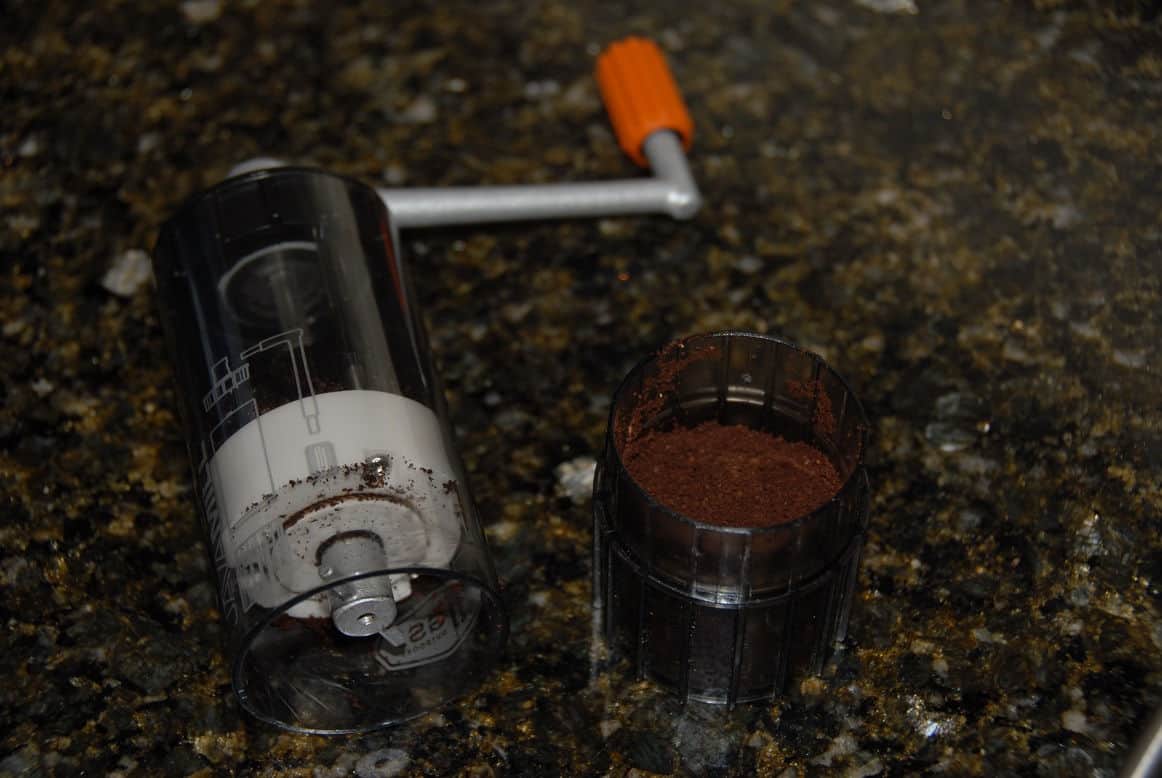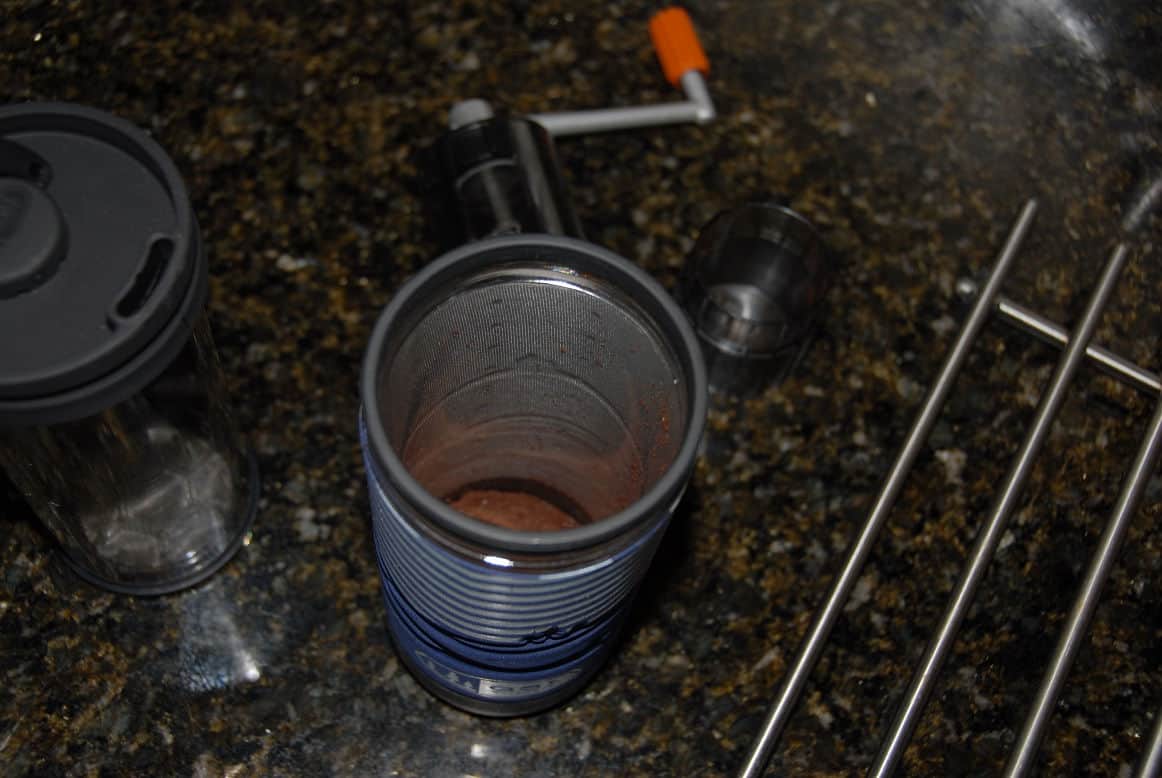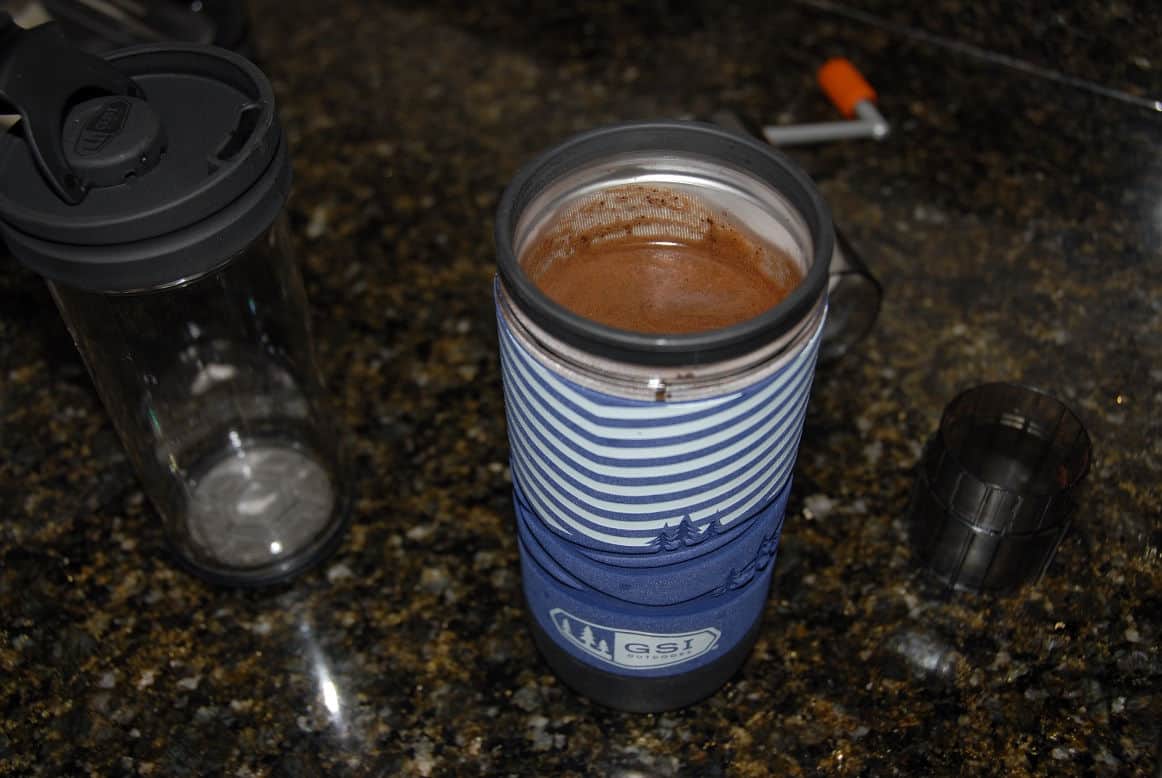GSI Outdoors is a company devoted to improving the outdoor experience. Although I’m decidedly not the outdoors type, like many of you reading this, I can’t start my day without a solid cup of coffee… or several!
GSI Outdoors was kind enough to provide us with a combination Javamill and Javapress for testing.
The GSI Outdoors Javamill, compacting hand-crank coffee grinder, is a compact, effective, and portable solution for freshly ground coffee on the go. The Javapress, portable french press travel mug, is the logical companion for the grinder, providing a portable way to enjoy freshly ground and pressed coffee, or even loose leaf tea.
I was impressed by the company’s thoughtful packaging materials, notably all recyclable cardboard or paper. So many companies today will unnecessarily wrap their products in plastic bags that consumers just throw away. By reducing the unnecessary packaging, you can tell GSI truly cares about the impact their packaging has on the outdoors.
Unboxing
When I opened the Javamill, I really had no idea what to expect as I’ve never had experience with a hand-crank manual coffee grinder. My first thought was that the Javamill has a sleek and compact appearance that would conveniently fit any laptop bag, suitcase, or purse. I’ve always owned electric grinders and currently own a couple for home and office use, both of the blade or burr type, none of which would be as portable. Having been in situations where my only options were instant coffee or Starsucks, the idea of hand grinding my own perfect cup anywhere is an exciting prospect.
Upon initial unboxing, visually I mistook the grinder itself as being made of white plastic. It turns out it’s actually ceramic, which is a material that is expected to last longer than it’s alternative steel grinding counterpart. It’s great to know that the designers went with the longer lasting material.
Despite being new to hand-grinding my own coffee beans, I have long been a fan of the coffee press. Having obtained coffee with percolators, office coffee machines, single cup drip, instant coffee, and even via vending machines, the clear winner for me has always been the french press. The Javapress out of the box seemed immediately up to the task of making a nice cup.
In Use
Disassembling the Javamill is a little tricky at first. The removable arm is held in by a ball bearing and corresponding divots on each end of the arm. In storage, the arm is parallel to the body of the grinder. In use, the arm is reversed to allow for grinding by removing the rotating silicone grip and attaching it to the opposite end. The fittings at first seem a little snug, which I imagine may loosen up over time.
The top cover and handle are pulled off of it’s internal hex mechanism by pulling straight off to access the bean compartment. This fitting is unusually tight. There are no particular instructions provided by GSI on how to remove it properly. My first attempt caused my arms to swing wildly apart. I later discovered that by holding the unit against my chest, it was much easier to get the required torque to gently remove the top. I expect over time, this fitting may also loosen after more use.
The bottom grounds compartment is much easier to twist and remove from the main unit. This is accomplished via it’s external slotted plastic grip and a slight twist while pulling.
Also inside the grounds compartment is an internal T-bar intended for adjusting the size of your grind. Clockwise turns tighten the conical burr closer together to create a finer grind, whilst counter-clockwise will provide a coarser grind. Because there are no settings to tell you what grind you will get, some trial and error is expected.
Once I had what seemed like an appropriate setting, I filled the Javamill about halfway full and got to grinding. The process was surprisingly easy and took maybe half a minute to complete. I tried holding the unit on a kitchen surface, holding it in the air, and sitting with it between my legs which was ultimately the best method for me. I can’t help but note that cranking horizontally is not quite as natural as vertical cranking, but the design of the unit allows the internal mechanism to remain simple which means horizontal cranking for the user.
After a few uses, I noticed white mechanical grease oozing from the top rotating mechanism. This was also seeping out the bottom and upon removal some of the grease was stuck to an errant piece of ground bean. While I’m not overly concerned, as I imagine this grease is what will help maintain the smooth rotation of the mechanism for many years to come, I will be washing the top with a mild dish soap, and keeping an eye on it.
The Javapress was less complicated overall for me. The unit consists of a standard portable coffee mug, with an external heat protective sleeve, and an internal sleeve with press filter at the bottom. A rubber seal at the bottom of the internal sleeve prevents any liquid or ground from escaping between the mug and sleeve. This design seemed more effective at preventing grounds from sneaking up the side like you may see in a typical plunger type press. The mug’s top attaches to the inner sleeve and contains vent holes to allow steam to escape when pressing. The sound of the steam escaping instilled a great deal of confidence and I was off to a great start.
I generally take my hot cup of joe in the untainted black form. One thing I am especially sensitive to is unwanted tastes getting into the coffee from the container it’s being drunk from. I know it sounds silly, but I can taste the paper cup and plastic lid that many basic coffee stands use. I believe this is the result of the extremely hot temperatures that coffee is served at in these places. The heat causes flavors from the paper cup and plastic lid to escape those materials and taint the coffee. As a result, I often order coffee in a ceramic mug if I can as ceramic does not leak chemicals into the coffee.
So, admittedly, I was a little concerned about the Javapress’ plastic mug and rubber seal and what effects they might have on the coffee’s flavor. I’ve long since converted from mugs of this type to portable ceramic alternatives because of coffee quality. And ideally, if GSI Outdoors could improve on this design with a ceramic portable press, I’d probably consider it over the Javapress. Also, I am unsure whether the plastic or rubber materials may degrade over time and cause some unwanted results. All that being said, in my initial tests, I was hard-pressed (pun intended) to notice a major taste difference between the Javapress and a ceramic mug, which seems promising, but needs a little more taste-testing at the time of writing because I burned my tongue.
Another minor issue I had with the cup is that because of the boiling temperatures required to make a proper french press, the lid made it difficult to safely drink the beverage once pressed. Typically when I am drinking a hot beverage, I may blow on it or sip it to avoid burning the tongue. However, drinking from the lid prevented me from really being able to do either and I did burn my tongue. Once I removed the lid, however, I was able to drink more safely. You do need the lid to properly press and remove the inner sleeve after drinking.
Verdict
The combination GSI Outdoors Javamill and Javapress are truly meant for coffee lovers on the go. Whether you are camping in the wilderness, on vacation stuck with bland restaurant coffee, visiting your in-laws who don’t own a coffee pot, or commuting in to work where you can’t stand the fact that people even qualify Folgers as real coffee, this combo will solve all those problems and probably many more. You might even get a few converts once they’ve tasted what good coffee should really taste like! The Javamill is available for $29.95 and Commuter Java Press is available for only $22.95.
